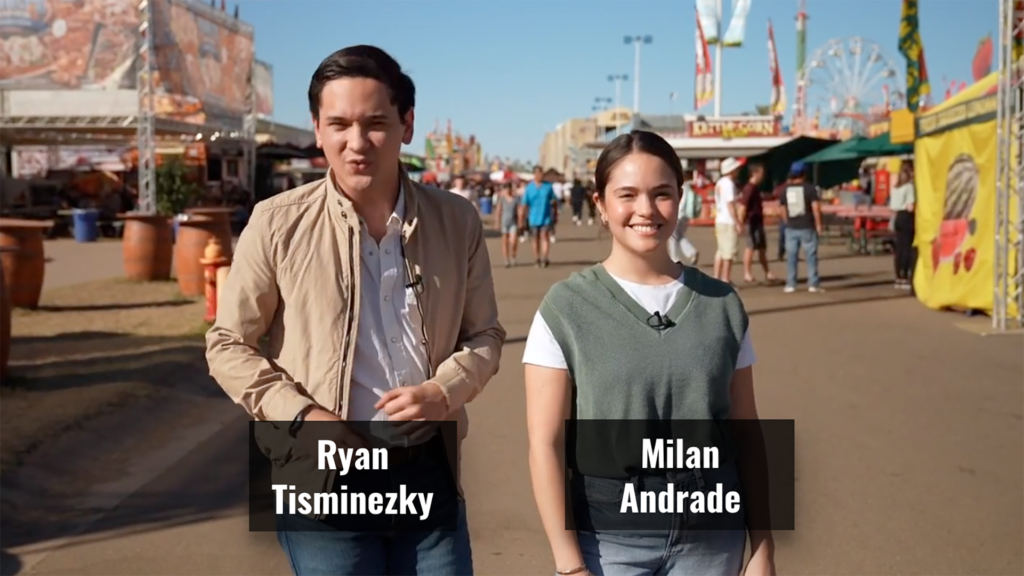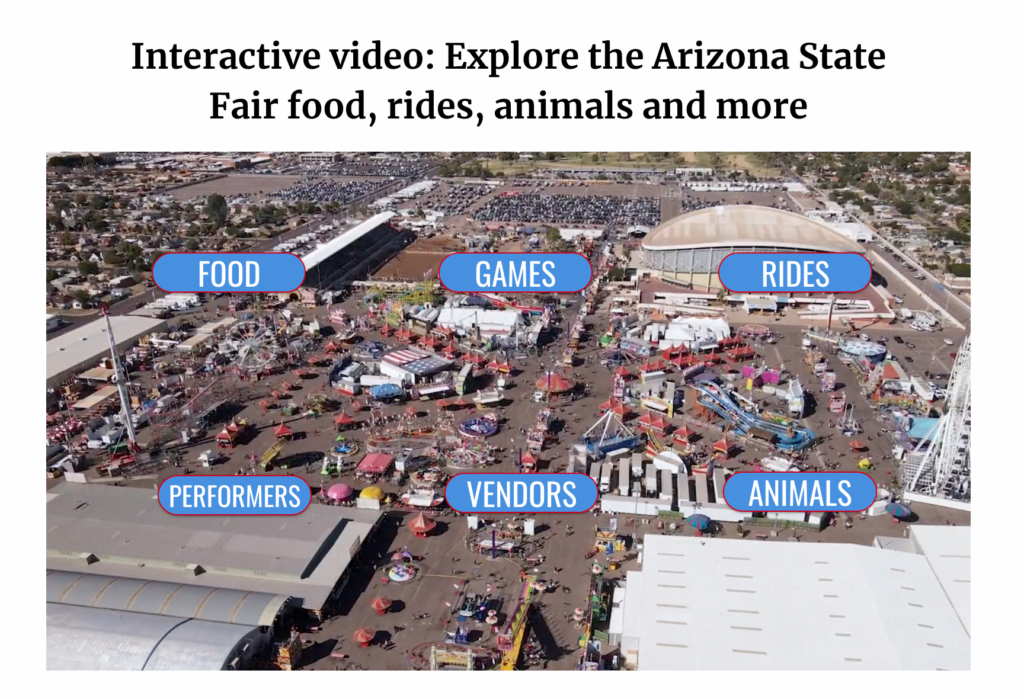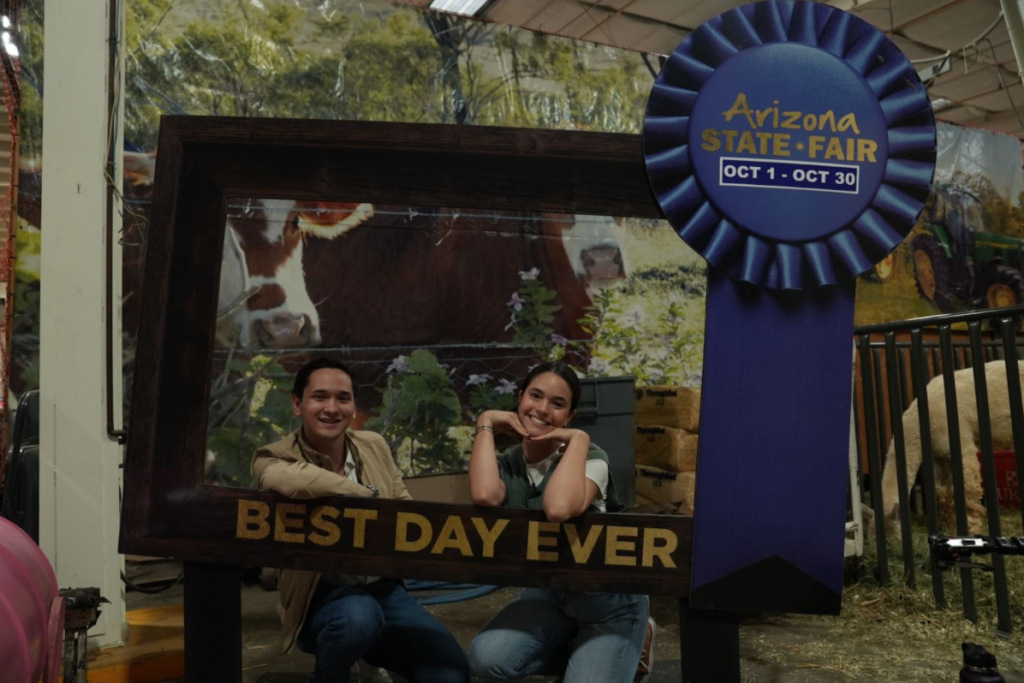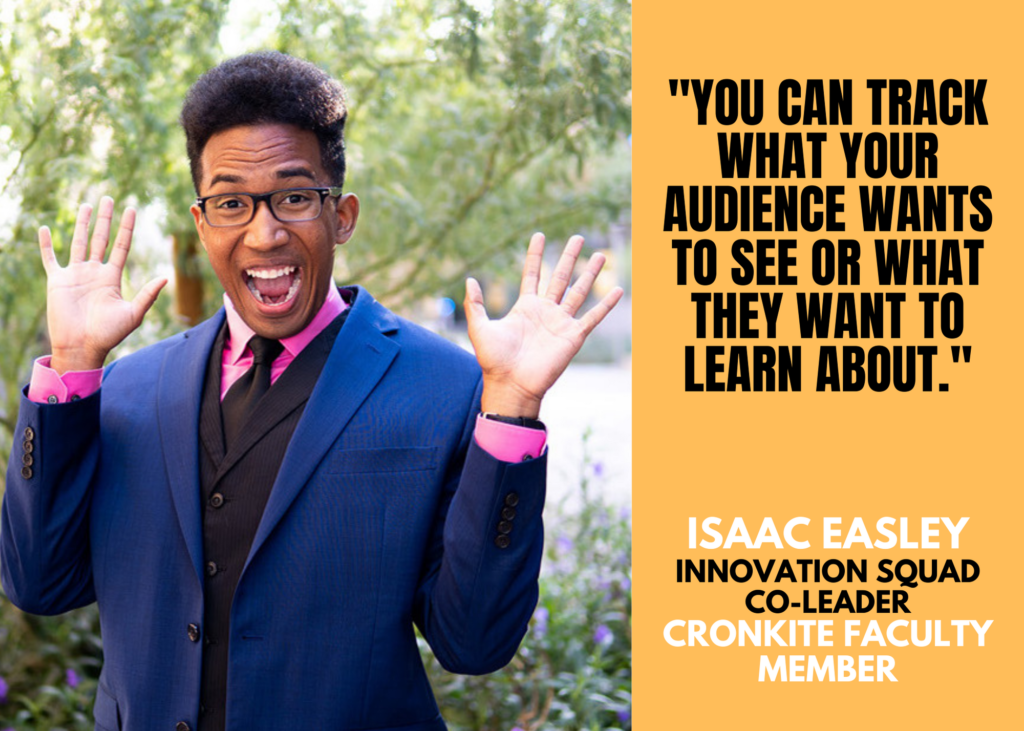
“Harnessing the cool.” It’s the mission statement for the innovation squad, a small team here at Cronkite News that experiments with different ways to present the news. The goal is to test new ideas for the news industry by tapping into students’ own media skills and habits. The latest example: a project that lets users control how they experience a video news story.
The squad used Mindstamp, an interactive video software that is featured on Cronkite News’ website, to take viewers inside the annual Arizona State Fair and let them manage their own experience. Like reading R.L. Stine’s “Give Yourself Goosebumps” series or watching Netflix’s “Black Mirror: Bandersnatch,” the project allowed users to choose what they want to see at the fair, ranging from food and games to rides, performers, vendors, and of course animals.

“It’s kind of like a little game,” innovation squad member Milan Andrade said. “You get to pick and choose how you want to watch your news or how you want to watch these stories.” After considering other interactive video software, the team landed on Mindstamp because of its easy-to-use dashboard, professional look, and newsroom-friendly cost. “It’s a different style,” said innovation squad co-leader Isaac Easley, a Cronkite faculty member who helps oversee and guide the team. “It’s more what you see on Instagram or TikTok [but] on a professional level.”
The State Fair project launched late last month and featured multiple Cronkite News reporters, videographers, and producers. Each route on the interactive video leads to specific examples — if you click on food, you can select the cheesy bacon bombs option — that users can learn more about for up to two minutes. “We want to give the viewers an option to take whatever journey that they want to go on in the interactive video but also showcase all the hard work that reporters did on the State Fair,” Andrade said.
The squad’s goal was to engage younger viewers, particularly in the desired 18-to-34-year-old demographic, with an alternative to the standard TV news package. “We turned what could have been a VO/SOT into an experience,” innovation squad member Ryan Tisminezky said. “It kind of lets audiences just experience the news as opposed to having it be told to them. They get to be a part of it.”
The software isn’t exclusively for light features either. In a story about gentrification, for example, it could give viewers the choice to learn more about a local politician or to learn more about how changing neighborhoods affect one group versus another. “The possibilities are kind of endless,” Tisminezky said. “It’s pretty much up to the reporter on how creative they are.”

Another advantage of Mindstamp is the analytics that it provides. Newsrooms can observe which interactive options users engage with the most and apply the insights to future coverage. “You can track what your audience wants to see or what they want to learn about,” Easley said. “You see the statistics, you see that they want to learn about a certain subject. From there, you can build stories around that.”

Cronkite News supported the feature by promoting it on its social channels and newscast, which is available in nearly two million households as well as online. “It’s a great opportunity to not only give a taste of what we’ll be showing, but direct people to the website for a fuller experience,” Executive Editor of Cronkite News Christina Leonard said.

Mindstamp is just one example of innovation by the young journalists at Cronkite News. They have produced a newscast without anchors and used TikTok to report on news. Students even produced a “Choose the News” newscast where viewers selected which stories reporters covered. “My hope is [that] new directors don’t necessarily have to teach [an innovative mindset], but the younger generation of journalists going into new newsrooms [will] bring that, and news directors will be more open to it,” innovation squad co-leader Melissa Brennan said. “It has to be a culture where leadership wants to hear those ideas and embrace them,” Leonard said. “They need to establish a culture that it’s okay for their journalists, young and old, [to try] something cool and see something that could work.”
Through two weeks, the Arizona State Fair feature accumulated 898 views, 589 unique viewers, and 765 interactions. While the team is figuring out whether the Mindstamp program is too time-consuming for short-staffed newsrooms and how stations can monetize it, innovation squad members say trying new ideas is worth a shot, because you never know what can resonate with a community. “What I love about the innovation squad is that we are breaking [formulaic news reporting],” Tisminezky said. “Sometimes we’ll find something that works. Sometimes we find something that doesn’t, but we’re trying to find the future of broadcast reporting [and] digital reporting.”
Get the Lab Report: The most important stories delivered to your inbox